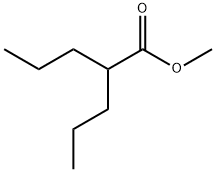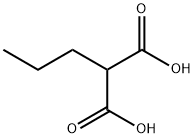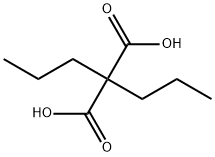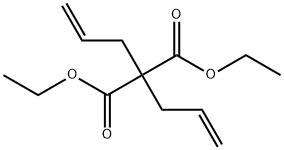ETHYL N-PROPYL ETHER
- CAS NO.:628-32-0
- Empirical Formula: C5H12O
- Molecular Weight: 88.15
- MDL number: MFCD00015215
- EINECS: 211-036-3
- SAFETY DATA SHEET (SDS)
- Update Date: 2024-12-18 14:15:30

What is ETHYL N-PROPYL ETHER?
The Uses of ETHYL N-PROPYL ETHER
Ethyl Propyl Ether (cas# 628-32-0) is used in the composition of methanol fuel for vehicles which solves the problems of vehicle methanol fuel meeting water and low temperature stratification, rubber swelling, metal corrosion, hot air resistance, and cold start.
General Description
A colorless liquid with an ether-like odor. Less dense than water. Flash point below 0°F. Vapors heavier than air. Used to make other chemicals.
Air & Water Reactions
Highly flammable. Soluble in water. Ethers tend to form unstable peroxides when exposed to oxygen. Ethyl, isobutyl, ethyl tert-butyl, and ethyl tert-pentyl ether are particularly hazardous in this respect. Ether peroxides can sometimes be observed as clear crystals deposited on containers or along the surface of the liquid.
Reactivity Profile
Ethers, such as ETHYL N-PROPYL ETHER, can act as bases. They form salts with strong acids and addition complexes with Lewis acids. The complex between diethyl ether and boron trifluoride is an example. Ethers may react violently with strong oxidizing agents. In other reactions, which typically involve the breaking of the carbon-oxygen bond, ethers are relatively inert.
Health Hazard
Inhalation or contact with material may irritate or burn skin and eyes. Fire may produce irritating, corrosive and/or toxic gases. Vapors may cause dizziness or suffocation. Runoff from fire control may cause pollution.
Fire Hazard
HIGHLY FLAMMABLE: Will be easily ignited by heat, sparks or flames. Vapors may form explosive mixtures with air. Vapors may travel to source of ignition and flash back. Most vapors are heavier than air. They will spread along ground and collect in low or confined areas (sewers, basements, tanks). Vapor explosion hazard indoors, outdoors or in sewers. Runoff to sewer may create fire or explosion hazard. Containers may explode when heated. Many liquids are lighter than water.
Safety Profile
A slight inhalation hazard. Very dangerous fire and explosion hazard when exposed to heat or open flame. To fight fire, use alcohol foam. When heated to decomposition it emits acrid smoke and fumes. See also ETHERS.
Properties of ETHYL N-PROPYL ETHER
| Melting point: | -127.5°C |
| Boiling point: | 62 °C |
| Density | 0.74 |
| refractive index | 1.3680-1.3710 |
| storage temp. | 0-10°C |
| solubility | Chloroform (Slightly), Methanol (Slightly) |
| form | Oil |
| color | Colourless |
| Stability: | Volatile |
| EPA Substance Registry System | Propane, 1-ethoxy- (628-32-0) |
Safety information for ETHYL N-PROPYL ETHER
| Signal word | Danger |
| Pictogram(s) |
 Flame Flammables GHS02  Exclamation Mark Irritant GHS07 |
| GHS Hazard Statements |
H225:Flammable liquids H336:Specific target organ toxicity,single exposure; Narcotic effects |
| Precautionary Statement Codes |
P210:Keep away from heat/sparks/open flames/hot surfaces. — No smoking. P233:Keep container tightly closed. P240:Ground/bond container and receiving equipment. P261:Avoid breathing dust/fume/gas/mist/vapours/spray. P271:Use only outdoors or in a well-ventilated area. P280:Wear protective gloves/protective clothing/eye protection/face protection. P303+P361+P353:IF ON SKIN (or hair): Remove/Take off Immediately all contaminated clothing. Rinse SKIN with water/shower. P370+P378:In case of fire: Use … for extinction. P405:Store locked up. P403+P233:Store in a well-ventilated place. Keep container tightly closed. P501:Dispose of contents/container to..… |
Computed Descriptors for ETHYL N-PROPYL ETHER
New Products
(S)-3-Aminobutanenitrile hydrochloride 4-Methylphenylacetic acid N-Boc-D-alaninol N-BOC-D/L-ALANINOL Tert-butyl bis(2-chloroethyl)carbamate 3-Morpholino-1-(4-nitrophenyl)-5,6-dihydropyridin- 2(1H)-one Furan-2,5-Dicarboxylic Acid Tropic acid 1-Bromo-3,5-Di-Tert-Butylbenzene S-2-CHLORO PROPIONIC ACID ETHYL ISOCYANOACETATE 2-Bromo-1,3-Bis(Dimethylamino)Trimethinium Hexafluorophosphate 4-IODO BENZOIC ACID 3-NITRO-2-METHYL ANILINE 1-(2,4-DICHLOROPHENYL) ETHANAMINE (2-Hydroxyphenyl)acetonitrile 4-Bromopyrazole 2-(Cyanocyclohexyl)acetic acid 4-methoxy-3,5-dinitropyridine 1-(4-(aminomethyl)benzyl)urea hydrochloride 2-aminopropyl benzoate hydrochloride diethyl 2-(2-((tertbutoxycarbonyl)amino) ethyl)malonate tert-butyl 4- (ureidomethyl)benzylcarbamate Ethyl-2-chloro((4-methoxyphenyl)hydrazono)acetateRelated products of tetrahydrofuran








You may like
-
 Ethyl propyl ether 95% CAS 628-32-0View Details
Ethyl propyl ether 95% CAS 628-32-0View Details
628-32-0 -
 Ethyl Propyl Ether CAS 628-32-0View Details
Ethyl Propyl Ether CAS 628-32-0View Details
628-32-0 -
 1-Ethoxypropane CAS 628-32-0View Details
1-Ethoxypropane CAS 628-32-0View Details
628-32-0 -
 1975-50-4 98%View Details
1975-50-4 98%View Details
1975-50-4 -
 2-HYDROXY BENZYL ALCOHOL 98%View Details
2-HYDROXY BENZYL ALCOHOL 98%View Details
90-01-7 -
 2-Chloro-1,3-Bis(Dimethylamino)Trimethinium Hexafluorophosphate 221615-75-4 98%View Details
2-Chloro-1,3-Bis(Dimethylamino)Trimethinium Hexafluorophosphate 221615-75-4 98%View Details
221615-75-4 -
 14714-50-2 (2-Hydroxyphenyl)acetonitrile 98+View Details
14714-50-2 (2-Hydroxyphenyl)acetonitrile 98+View Details
14714-50-2 -
 118753-70-1 98+View Details
118753-70-1 98+View Details
118753-70-1